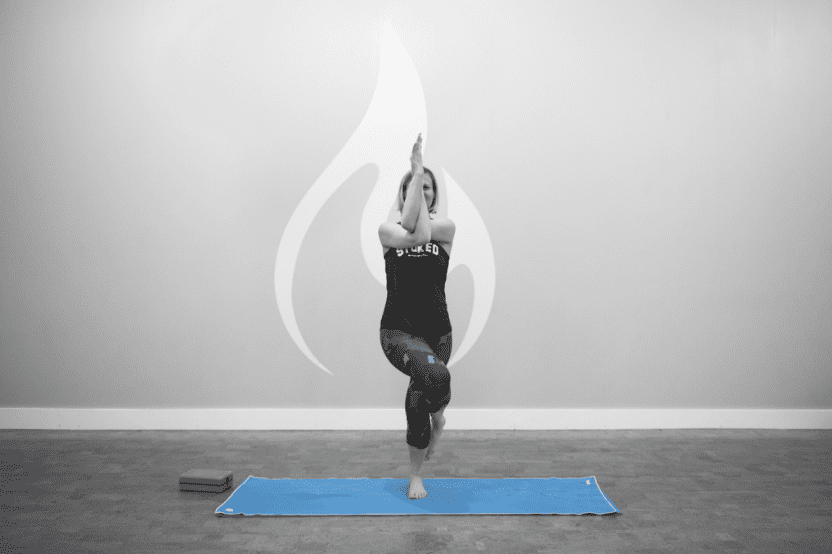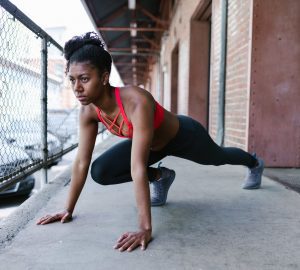Ever walk into a yoga class even if it’s your first or twentieth class and still wonder what that instructor just called that pose? Or have to look around in order to figure out the pose because your yoga instructor only instructs in Sanskrit? Well, welcome to The Breakdown. In this short run down I will deconstruct six Moksha Yoga Poses with fun Sanskrit names that may have made you go uh…? Bonus! These poses are accessible for everyone so have fun!
Utkatasana (OOT-kah-TAHS-anna)
a.k.a – powerful pose, thunderbolt
Inhale reach your arms up, exhale bend your knees and sit back. Bring your thighs nearly parallel to the floor. Upper body leans slightly forward, keep chest open and lifted. Weight is evenly distributed in the feet. Press the top of your thigh bones down towards the heels.
Parivrtta Utkatasana (par-ee-vrit- tah OOT-kah-TAHS-anna)
a.k.a – prayer twist
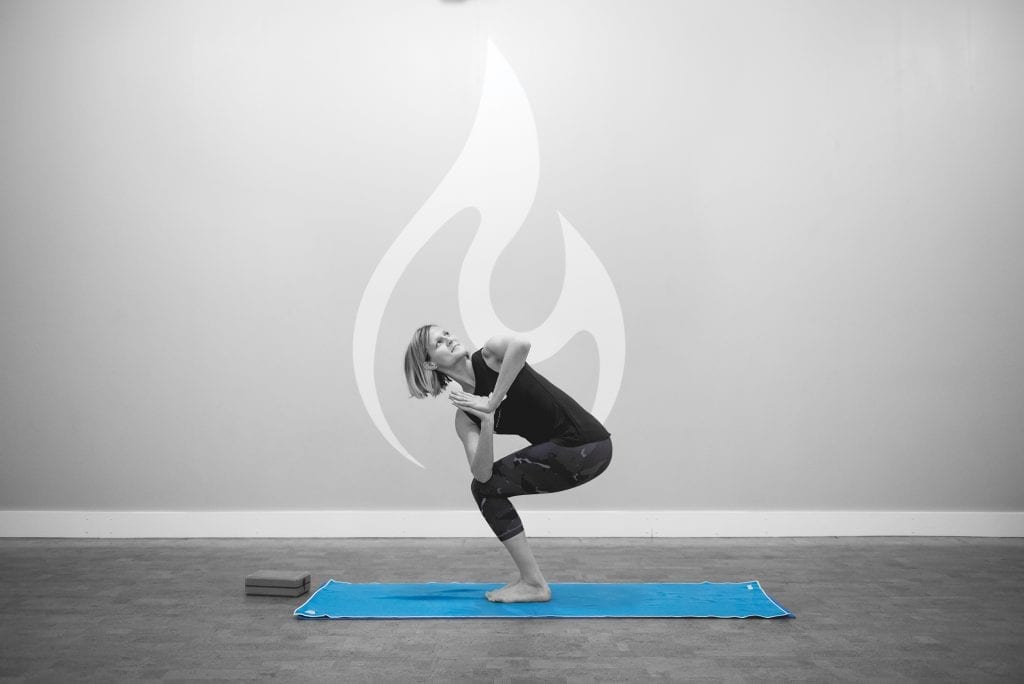
Inhale reach your arms up, exhale bend your knees and sit back. Bring your thighs nearly parallel to the floor (see Utkatasana for initial set up). Bring your hands to press together in front of your chest. Keep your chest lifted, exhale twist to the left (working with the digestive system) bring your right elbow to your left thigh. Modification for this Moksha Yoga Pose is to bring your left hand onto your lower back and your right forearm across your thighbones, less intense option for the twist. Repeat twisting to the right.
Garudasana (gah-rue-DAHS-anna)
a.k.a – Eagle pose
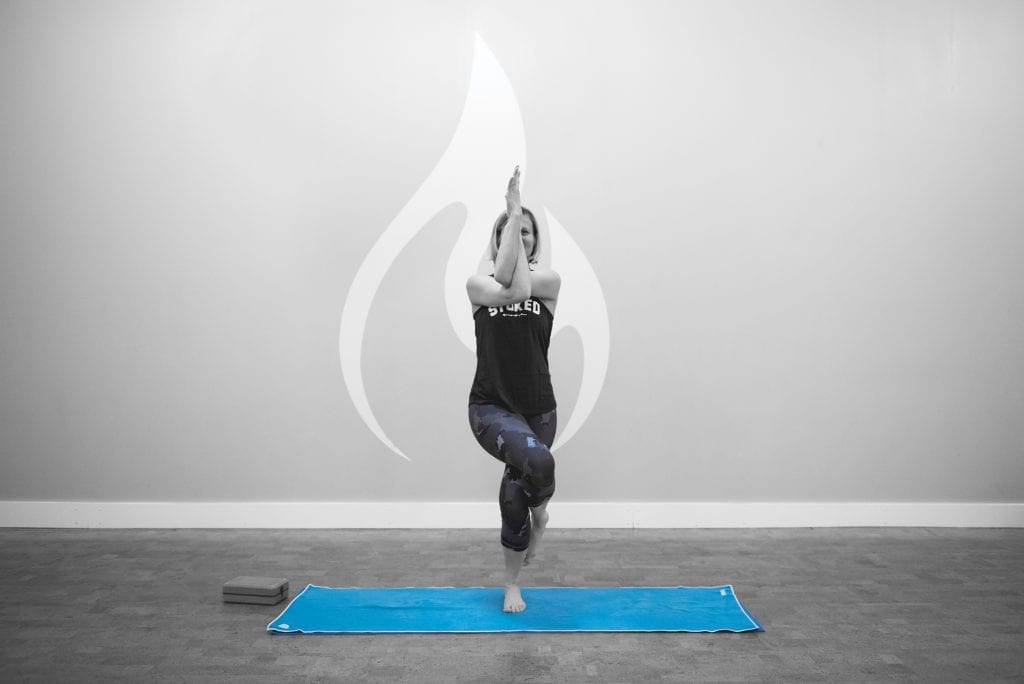
From standing, inhale sweep your arms up, exhale sweep your right arm under your left arm, back of your hands will face each other, continue to cross and bring your palms to touch. Modification is to grab opposite shoulders and make sure your elbows squeeze together. Keep your torso lifted, exhale squat down and lift your right leg to cross over your left leg, point your right toes towards the floor. Squeeze your right hamstring against your left thigh and your right arm press it down and lift your left arm up. Press your limbs together to open the hips and upper back. Drishti or point of focus is either past your hands or to your thumbs. This is often the toughest Moksha Yoga Pose to master for balance.
Virabhadrasana II (veer-ah-bah-DRAHS-anna)
a.k.a – warrior 2
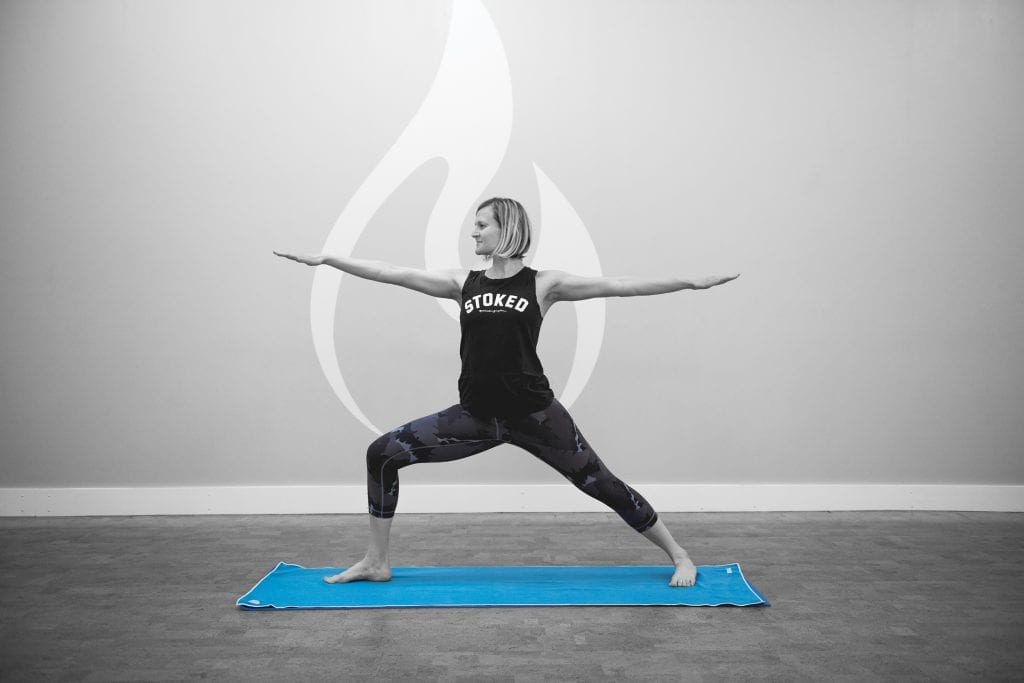
From standing step your right foot back, feet are parallel to each other. Pivot your left foot to the left 90 degrees. Extend your arms out parallel to the floor, keep your torso lifted, exhale bend your left leg so the shin is perpendicular to the floor. Keep your right leg straight and press the outer edge of your right foot into the floor.
Utthita Trikonasana (oo-TEE-tah trik-cone-AHS-anna)
a.k.a – extended triangle pose
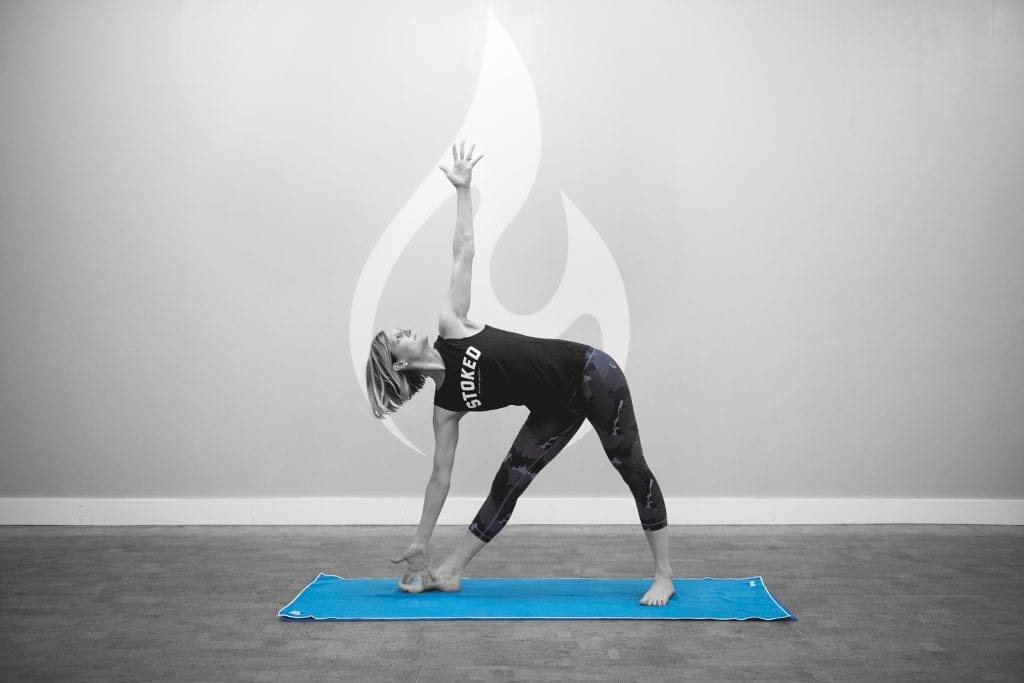
From warrior 2, which is described above, is a great way to enter triangle Moksha Yoga Pose. From warrior 2, straighten your front leg, reach your whole upper body forward, shift your hips back. Bring your left hand down to your shin, reach your right arm up. Press the mound of your left big toe into the floor and turn your left thigh outward. Press the outer edge of your back foot into the floor and turn the thigh slightly inward. Lengthen the sides of your torso.
Ardha Chandrasana (are-dah chan-DRAHS-anna)
a.k.a – halfmoon pose
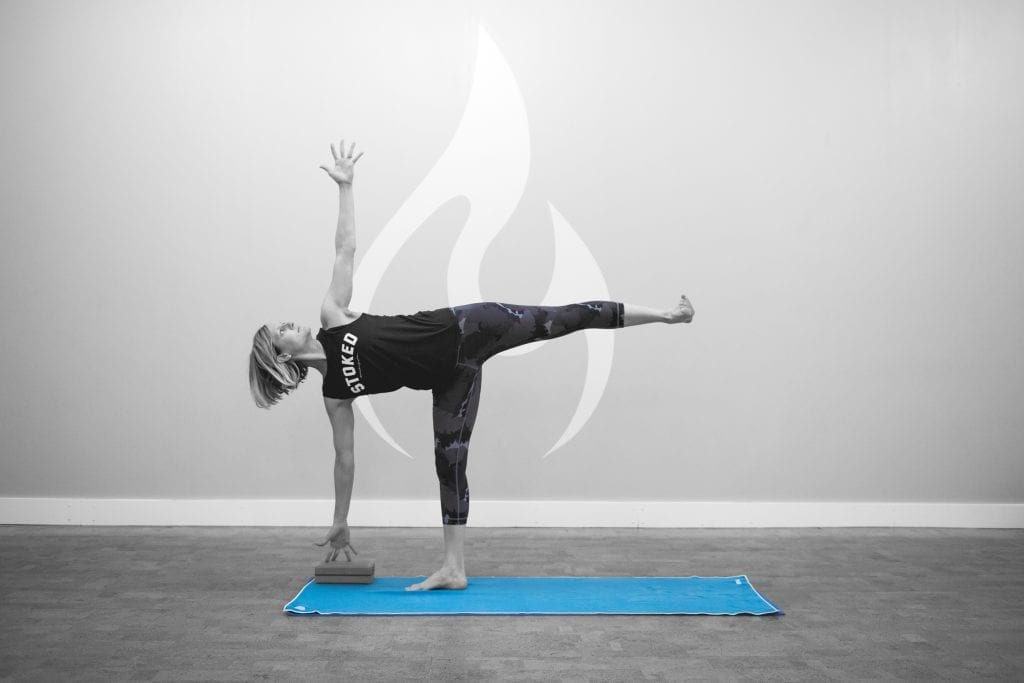
Moving from Utthita Trikonasana, look to the floor, bring your right hand to your right hip, bend your left leg and lift your right leg up so that your torso and your right leg are in a long line. Bring your left hand to the floor a foot in front of your left foot. Turn your right thigh up to the ceiling, aim your sacrum to your right heel and flex your right foot. Open your torso to face the right.
Hope this helps with any ‘WTF’ moments you may be experiencing when learning a Moksha Yoga Pose!
Angela Zawada – Moksha Yoga Edmonton & Moksha Yoga Edmonton South





